
































North Stonington

For much of the 17th century, North Stonington was thinly populated by the Pequots and European settlers. Starting in the 1630s and 1640s, the English established coastline settlements in Wequetequock (what is now Old Mystic) and Pawcatuck. However, the pressure of a growing population and continued immigration in succeeding decades caused homesteading to steadily push northward. The crushing of the last independent Indian tribes throughout New England during King Philip's War of 1676 and the resolution of border disputes between Connecticut, Rhode Island, and Massachusetts also encouraged enterprising pioneers to move inland to stake claims.
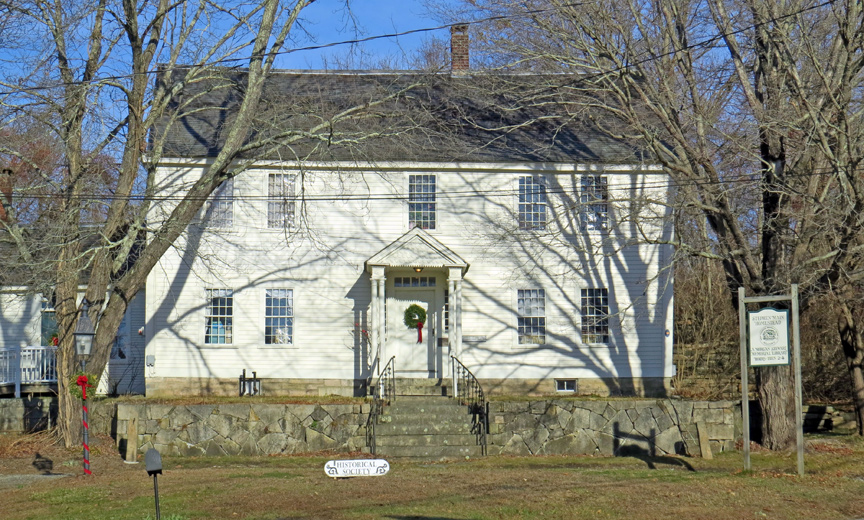
The first settlers to North Stonington were Ezekiel Main and Jeremiah Burch, who
in 1667 established settlements in the areas which became the village of North
Stonington and Clark's Falls, respectively. Main, formerly of Massachusetts, had
served in King Philip's War, and received in return for his military service a
land grant. Burch had been a blacksmith in England before making the crossing to
America and establishing a land stake. Other pioneers soon followed; during the
1670s and 1680s families arrived that would form the backbone of the town: They
were the Mains, Miners, Wheelers, Browns, Palmers, Hewitts, and Averys, to name
a few. The southern part of the town was probably settled first, not only
because most pioneers came up from the coast, but also because the southern end
of the town has flatter land easily adapted to agriculture. The northwest end of
the town perhaps was settled last. Among those were John Swan and his family in
1707, for whom Swantown Road is named.
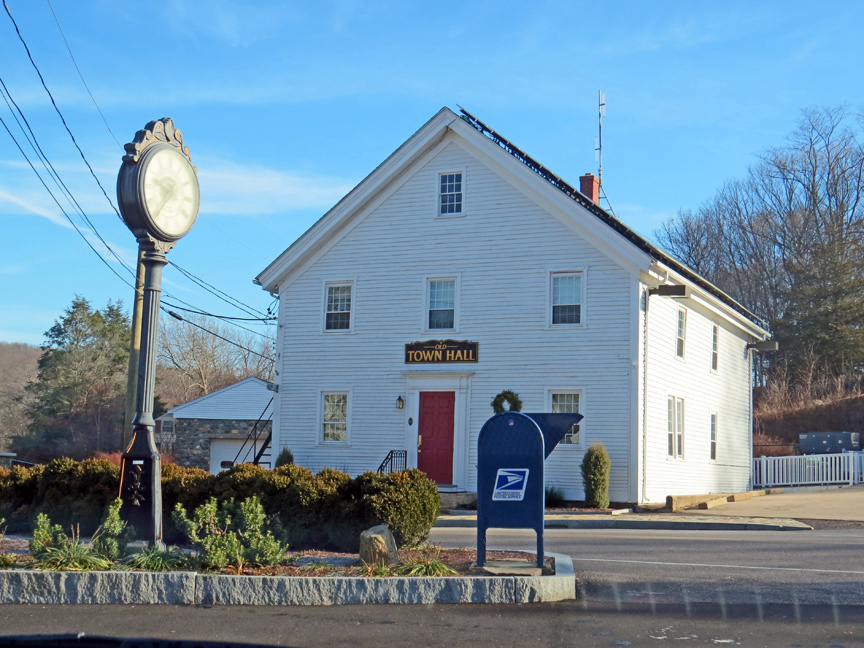
For most of the 18th century the town's inhabitants focused on carving out
homesteads and farms from what had been virgin forests. This was a slow,
generations-long process, as pioneers girdled massive, centuries-old trees until
they rotted and fell to the ground, and they began the appallingly difficult
work of clearing ground and moving boulders. Roads, beyond just cattle paths and
old Pequot trails, began to be forged through the receding wilderness; colonial
surveyors in 1753 marked out the future route of the Pawcatuck-Voluntown Road
(today known as Route 49). One of those who worked on this project was
16-year-old Silas Deane, who later represented Connecticut during the first and
second congresses and served briefly as one of the United States' first
diplomats in France. In 1768, a weekly stagecoach was opened between Norwich and
Providence via North Stonington and Pawcatuck; this road would become the
Norwich-Westerly Road, today known as Route 2.

The reluctance of settlers to walk the great distance every Sunday to the "Road"
church, currently located on Route 1 in Stonington, led to the establishment of
a "northern" Congregational society in 1717, in which the northern part of
Stonington aimed to build its own meeting house. This "North Society" defined a
boundary line that is identical to the border today between North Stonington and
Stonington, although disagreements about the establishment of this line and the
location of the northern meeting house lasted until 1723 and required the
colonial assembly's intervention several times. In 1724 North Stonington gained
its name for the first time, when the Connecticut Assembly decreed that the
North Society would take the name "North Stonington". A church was finally
erected in 1727 (located on a knoll adjacent to what is now the junction of
Wyassup and Reutemann roads), and gained a permanent minister in 1731, when the
Rev. Joseph Fish, a newly ordained minister from Harvard, arrived. He served
until his death at 76 in 1781. This meeting house, which stood for about a
century, became known as the "Black Church", perhaps because its board walls
were never painted and became dark with age.
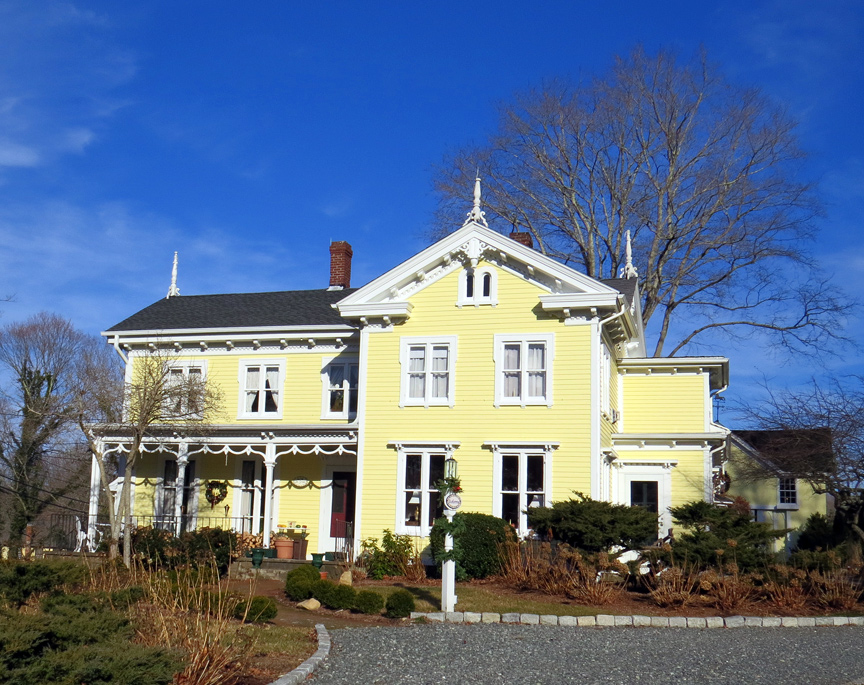
Not long afterward, in the early- to mid-1740s, the religious "Great Awakening"
swept through the American colonies. One of the main results of this revivalist
movement was the rapid growth of the Baptist Church in America, and North
Stonington became a bastion of this denomination in Connecticut. Much of the
congregation for this church came from Rev. Fish's flock, and the new Baptists
established their own meeting house in 1743. This first Baptist church—for both
Stonington and North Stonington—today is located at Pendleton Hill in the town's
northeastern corner, but the original building sat a short distance to the
south. A stone marker is now at the site. Further turmoil within Rev. Fish's
congregation culminated in the departure of another group that formed a "Strict
Congregationalist Church" in 1746 more than a mile west of The Village. (During
1817-27 the Congregationalist and Strict Congregationalist churches reunited and
built a common church, which is the current location of the town's
Congregational Church.) This schism within the local religious community was
deeply traumatic for the Rev. Fish, who later wrote that the "order of families
as well as of churches and religious families, is vilely broke, dissolved and
lost . . . the reins of government are thrown upon the neck, and nothing but
anarchy andconfusion reigns."
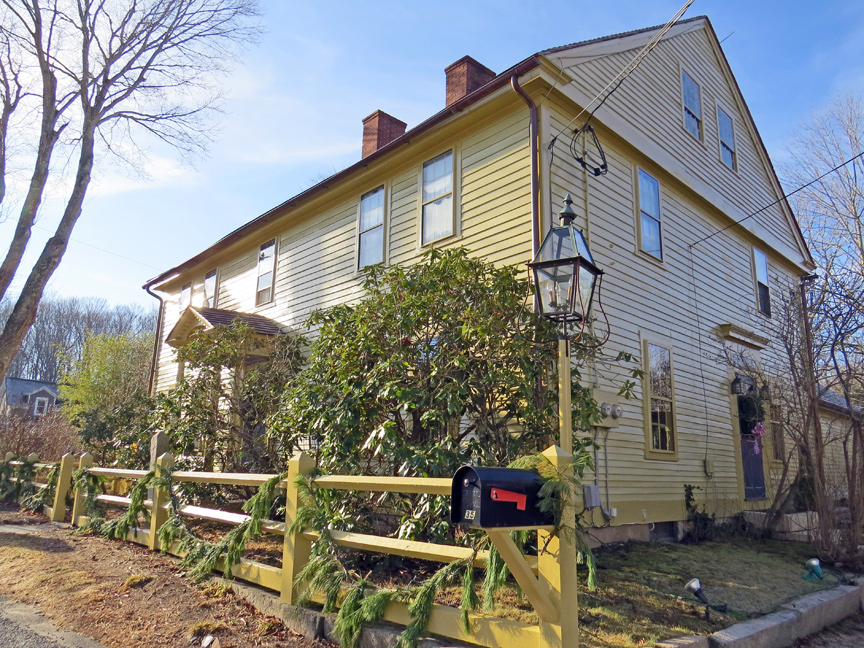
The establishment of the other two Baptist churches was considerably less
dramatic. The Rev. Waite Palmer organized the Second Baptist Church, located
then as now at the intersection of Pendleton Hill Road and Stillman Road, in
1765. The third Baptist Church was established in 1828, evidently to serve the
rapidly growing population of millworkers in the village of North Stonington
itself.
Text from Wikipedia
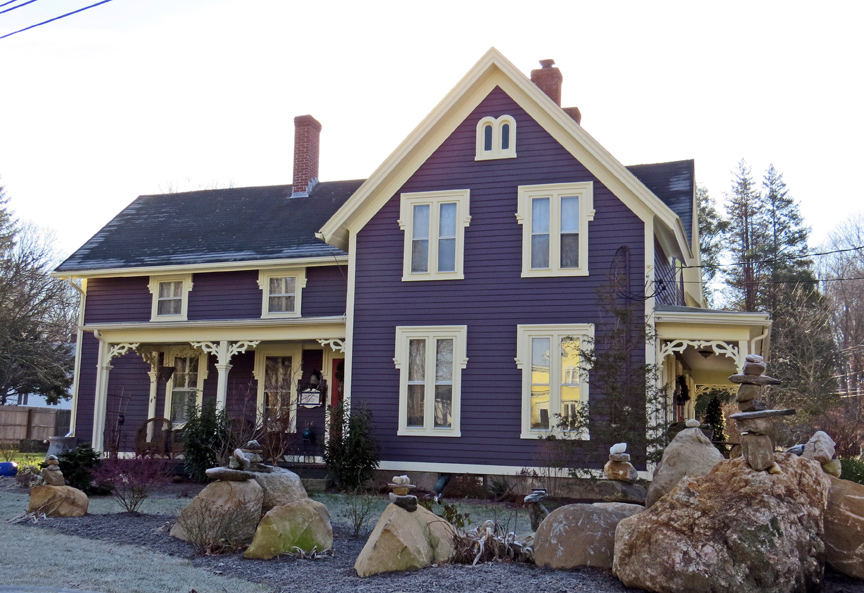
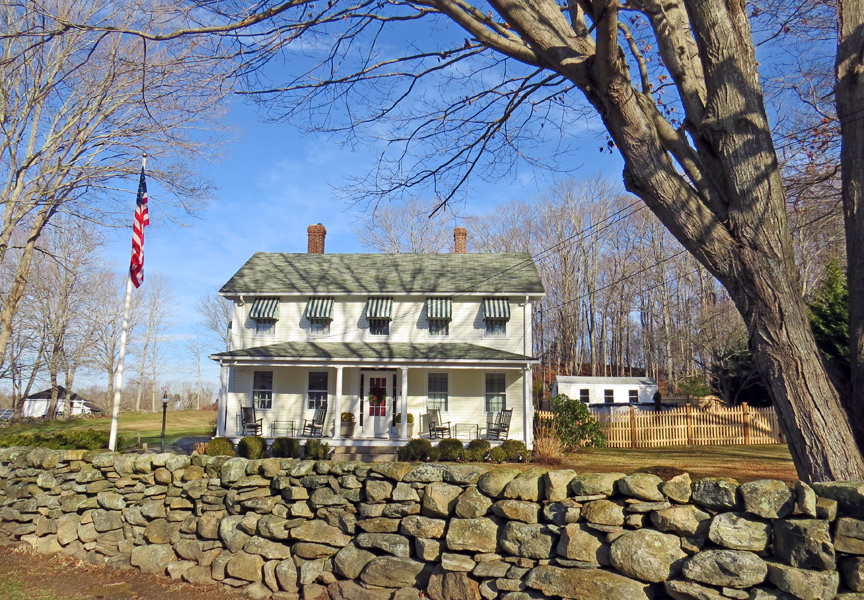
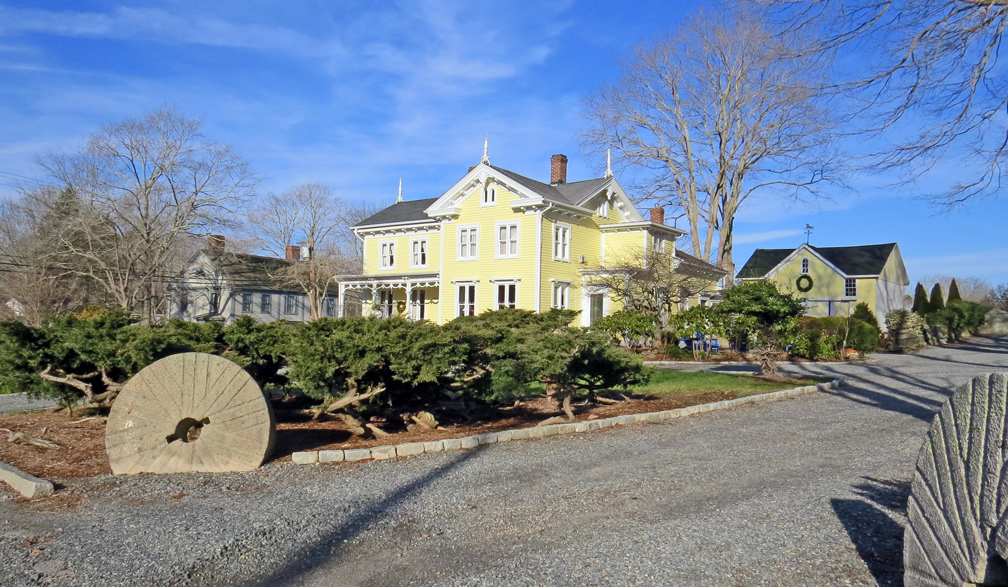
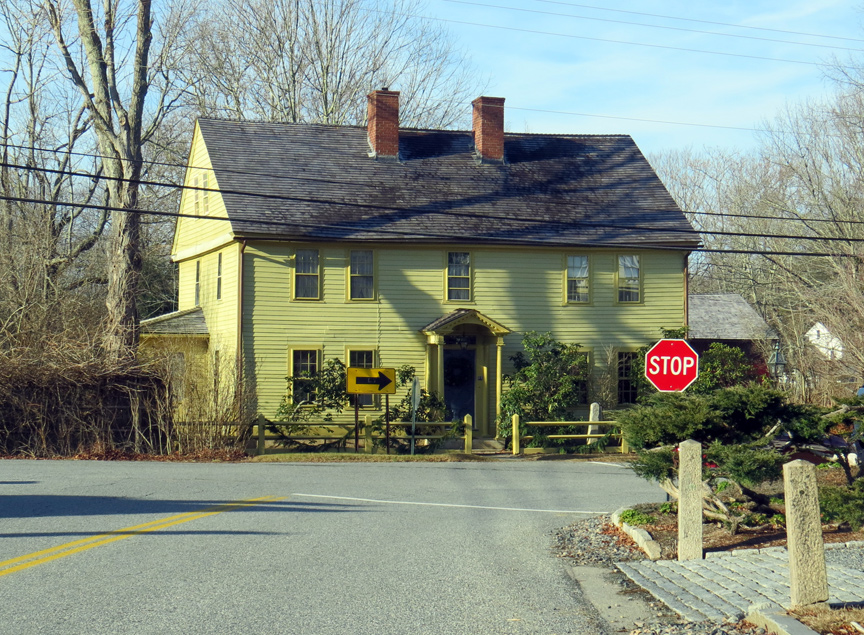
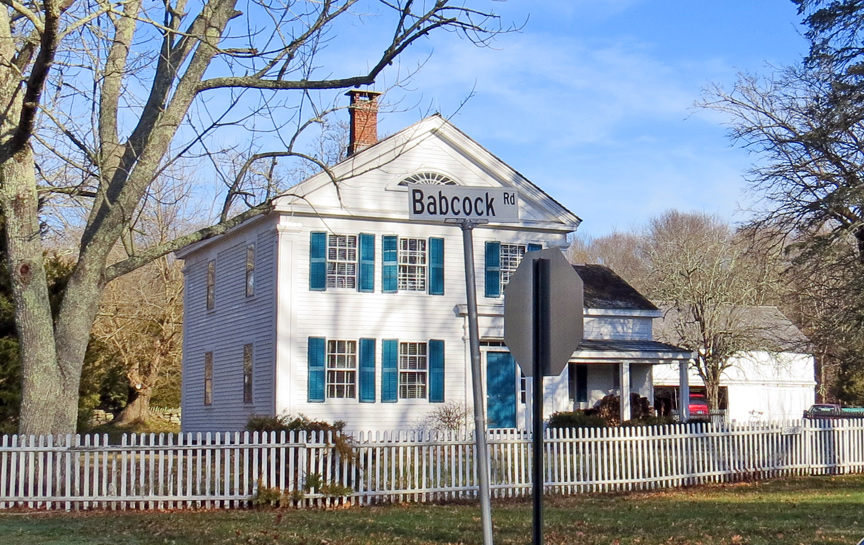
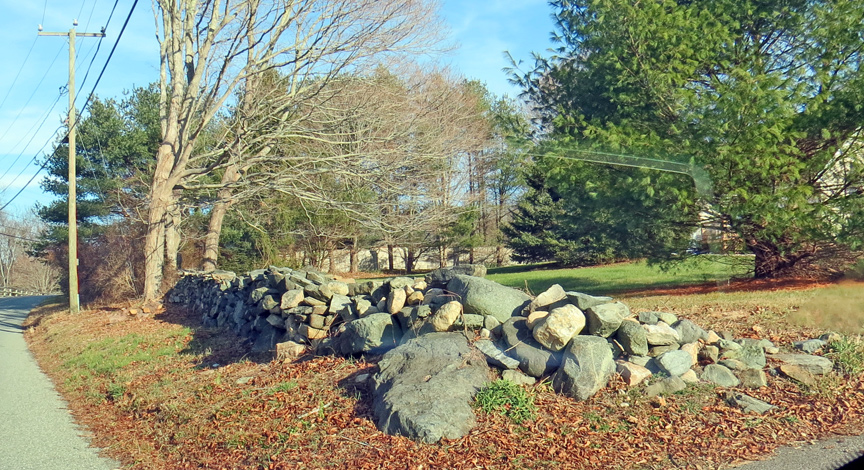
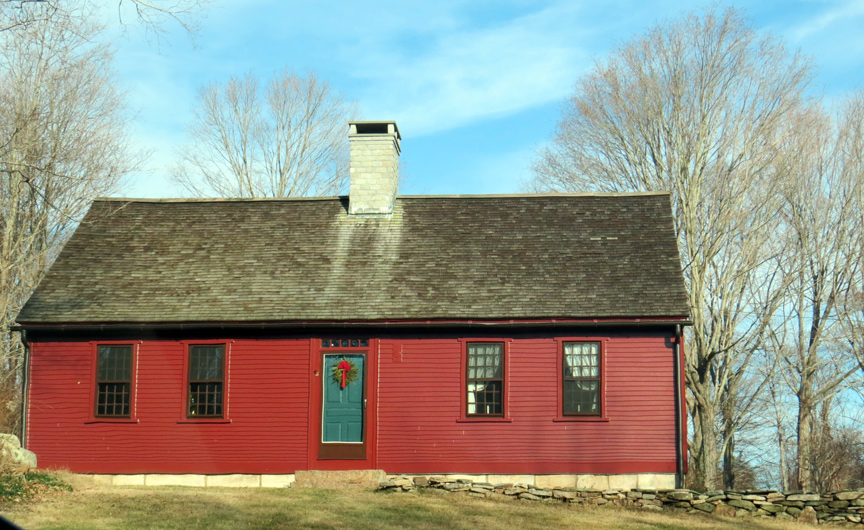
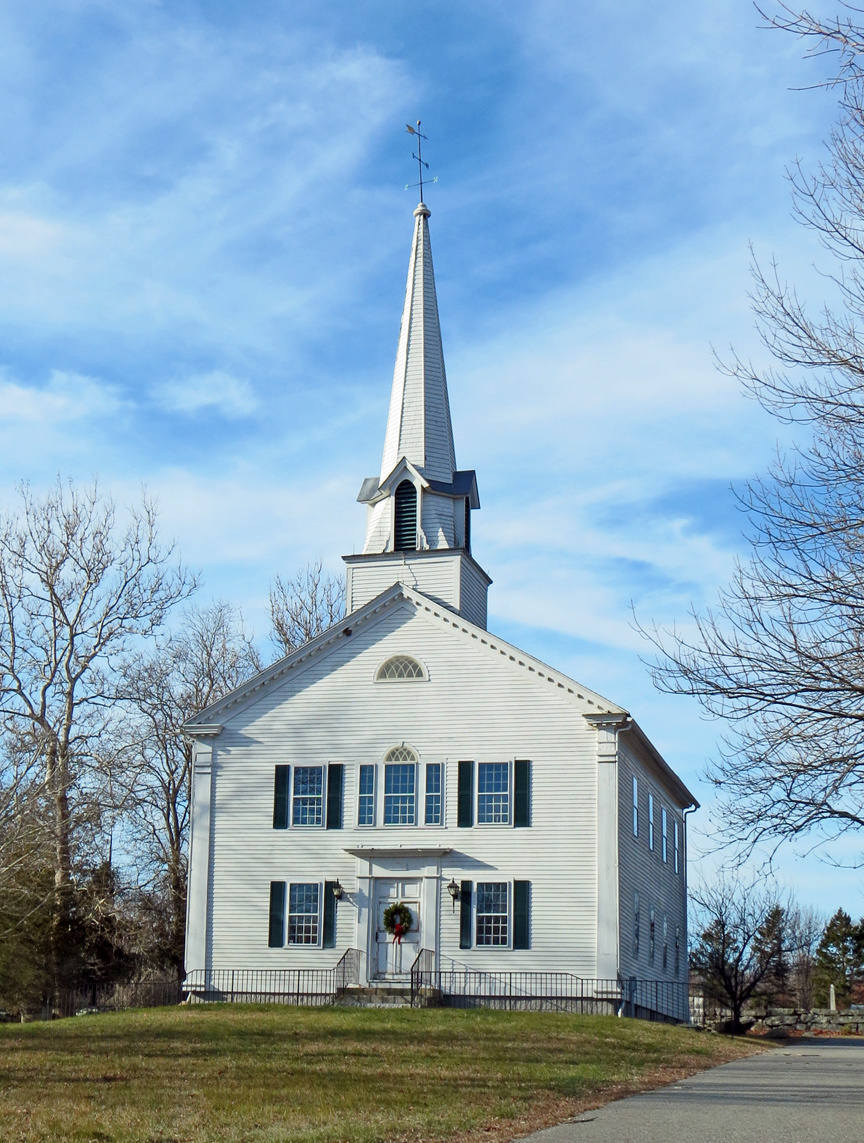

front door
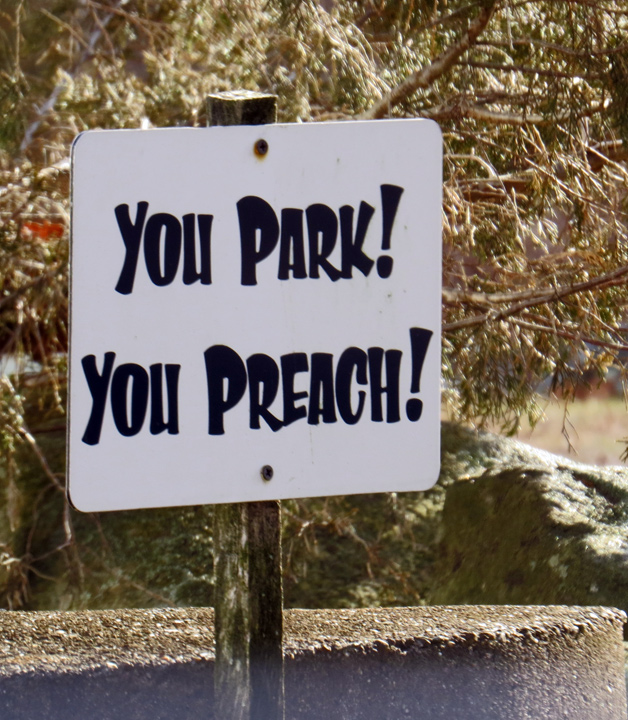
Pastor's parking spot
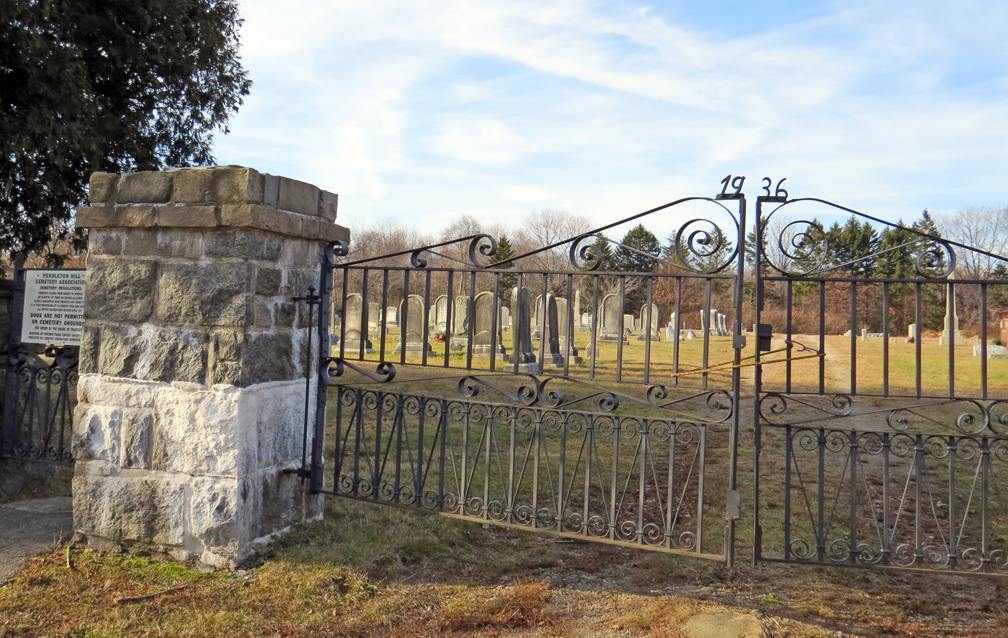
the burying ground
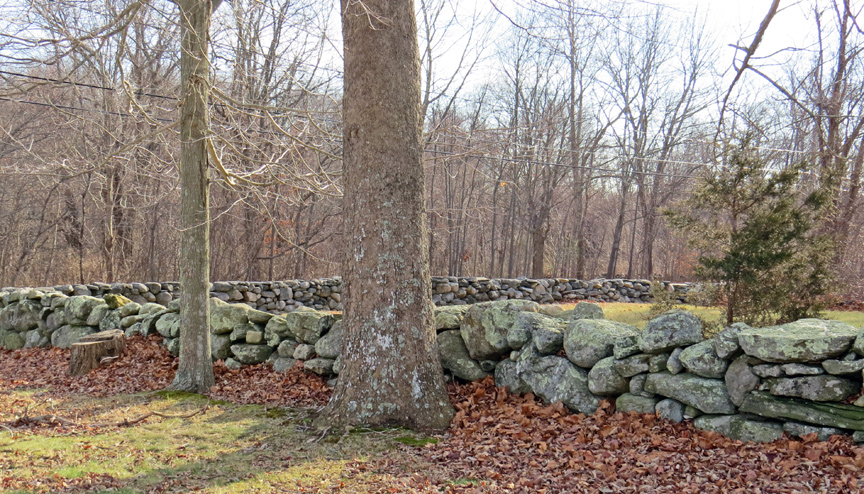
stone fence
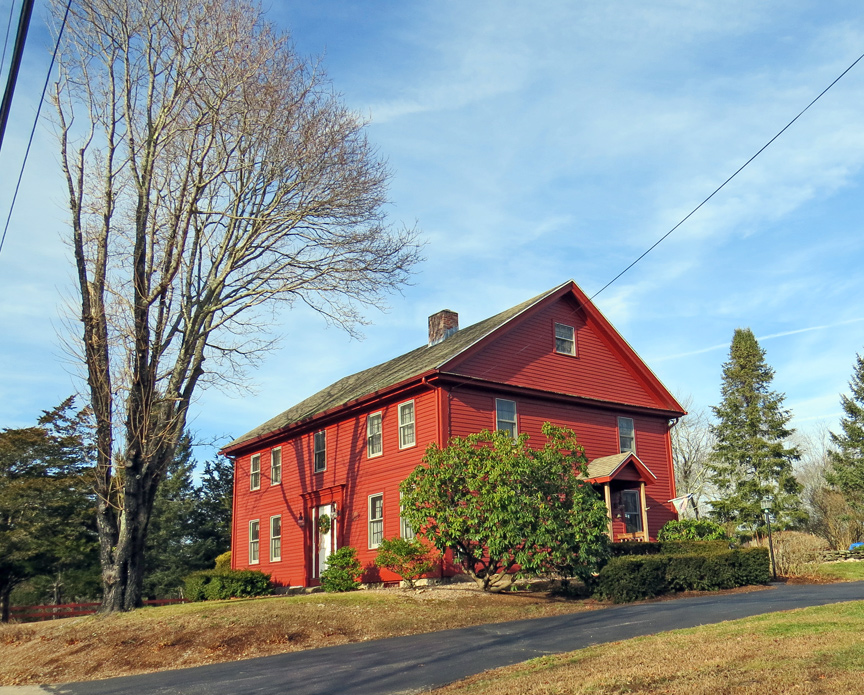
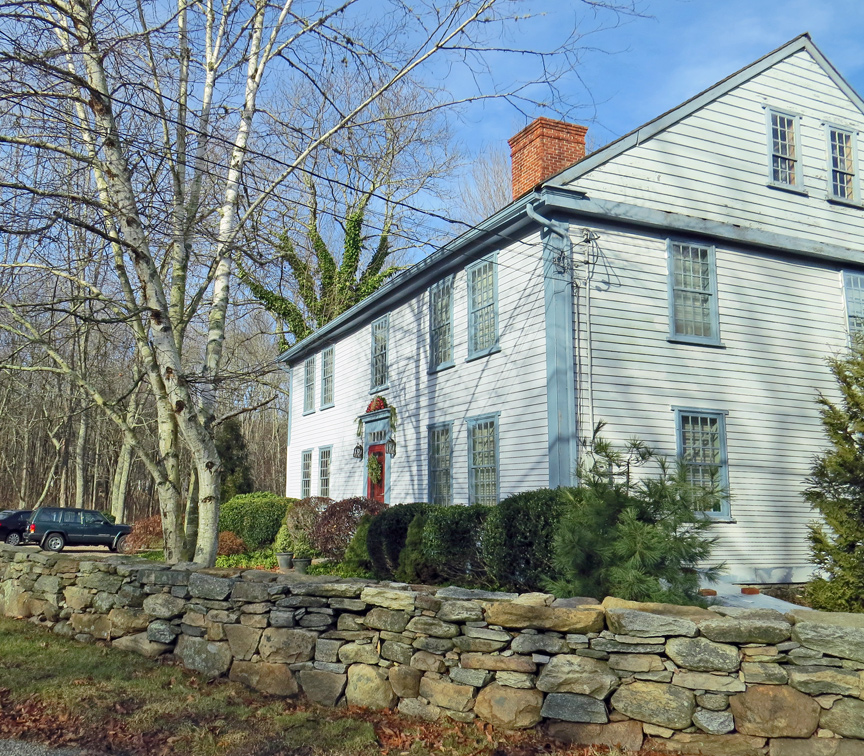


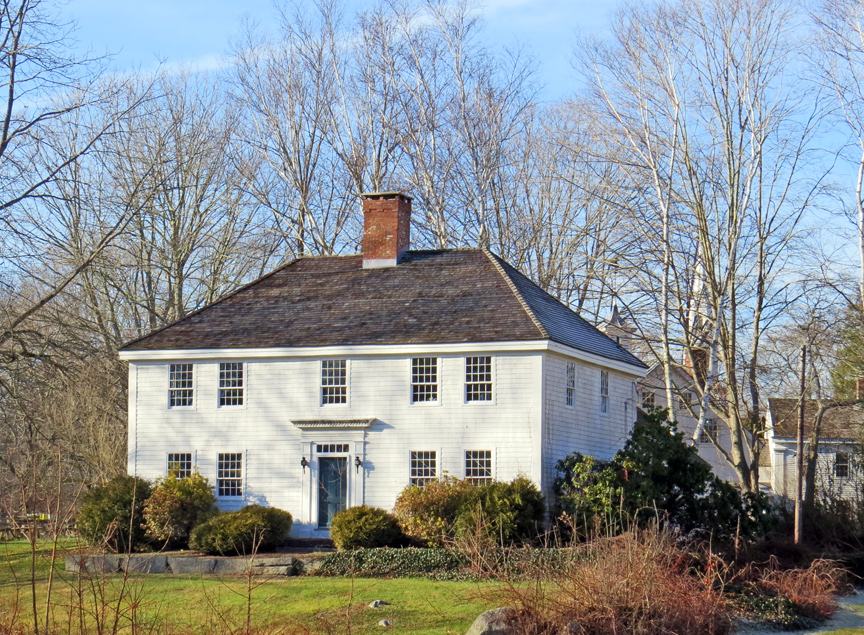
central chimney
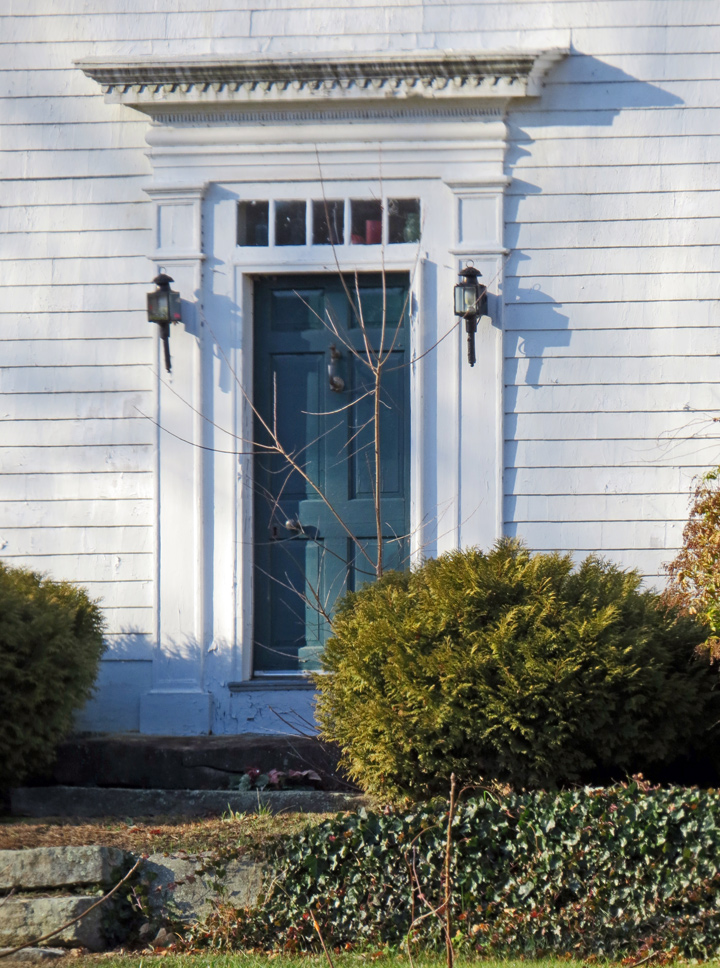

mill wheel
Preston

In 1686, Thomas Parke, Thomas Tracy, and several others petitioned for and were granted by the Connecticut General Court authority to establish a plantation seven miles square to the east of Norwich and north of New London and Stonington. Owaneco, son of the Mohegan sachem Uncas, gave a confirmatory deed for the land in 1687. In October of that same year, the town was formally incorporated as Preston, named for the English city of Preston, Lancashire.
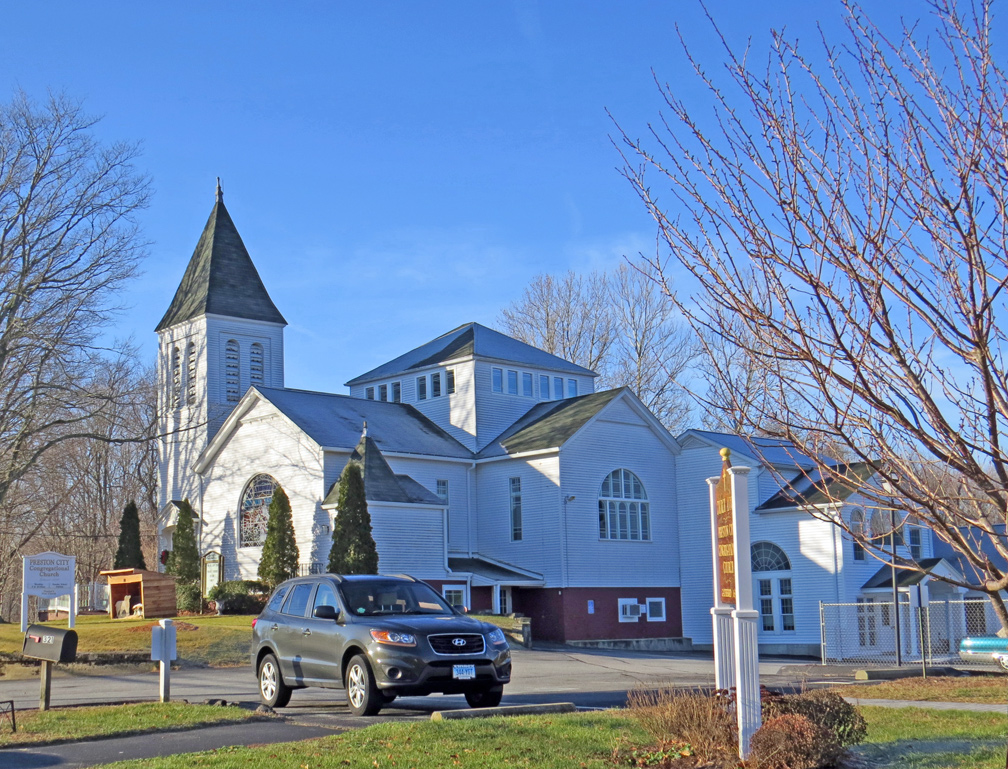
The Ecclesiastical Society of Preston was first organized in 1698, with the
first meetinghouse located in present-day Preston City. At the request of
residents in the northern part of Preston (now the town of Griswold), the North
Society was established in 1716. A splinter group, the Separate Church of
Preston, was established in 1747 and continued until 1817.
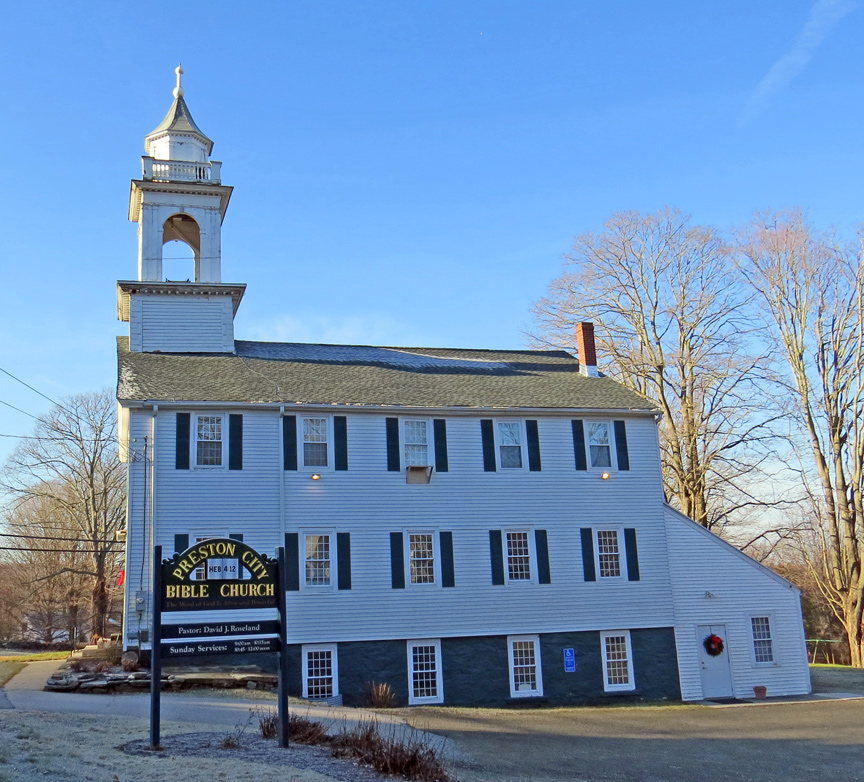
The Preston City Baptist Church (now the Preston City Bible Church) was established in 1812.
Text from Wikipedia

stone fence
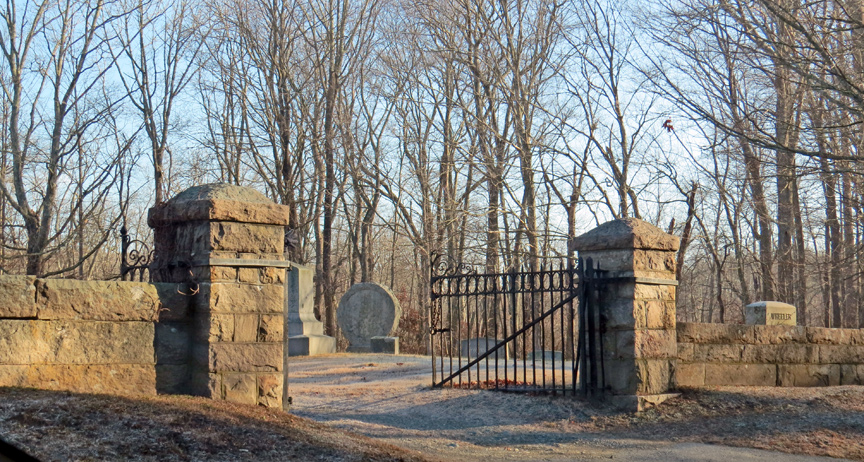
burying ground

library